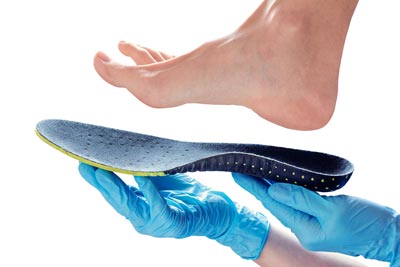Plantar fasciitis is a painful condition located along the bottom of the foot, predominantly in the arch area. It is caused by overuse of the arch tendon (plantar fascia) of the foot; and if you’ve ever suffered from Plantar Fasciitis, you know that this can be one of the most irritating and hard to treat injuries there is.
The most common causes of plantar fasciitis are overly tight or inflexible calf muscles and/or surrounding and supporting tendons which leads to persistent pronation of the foot. This pronation can produce over-stretching of the arch tendon, and can lead to inflammation and thickening of the tendon.
The Plantar Fascia is a band of tissue that runs from your heel down through most of the length of your foot. It could be considered to be a “shock absorber” for your arch. This tissue is also known as the arch tendon. When this tissue becomes inflamed, the result is Plantar Fasciitis, a condition that can result in moderate to severe pain in your heel and foot.
Plantar Fasciitis, over time, can also cause a heel spur. If untreated, the condition can become degenerative, causing further pain, symptoms and long-term treatment challenges.
Not surprisingly, runners, golfers and tennis players who spend long hours on their feet are some of the most common victims of Plantar Fasciitis. Additionally, those over 40 are more susceptible, as is anyone who is predisposed to the condition. People with tight calves are thought to be more likely to develop the condition, as is anyone who spends time on their feet without proper footwear.
Temporary relief from Plantar Fasciitis can often be found through stretching localized massage, or anti-inflammatory medications. This relief is typically short-lived, however, as the condition will usually persist until it is properly treated and the underlying cause is identified and addressed.
Permanent relief from Plantar Fasciitis will usually come from a combination of the following approaches:
– Improved footwear for the activity you’re engaging in
– Orthotics, if determined to be necessary to proper foot alignment and support.
– Specific Stretching for the foot and calf muscles
– Physiotherapy; IMS is often used in this area.
– Massage
– Laser Therapy to treat the inflamed area
– Athletic tape to support the arch tendon
– Shockwave Therapy to treat the inflamed area
You should seek treatment if you suspect that you may have this conditions as it can become more severe if left unattended.


